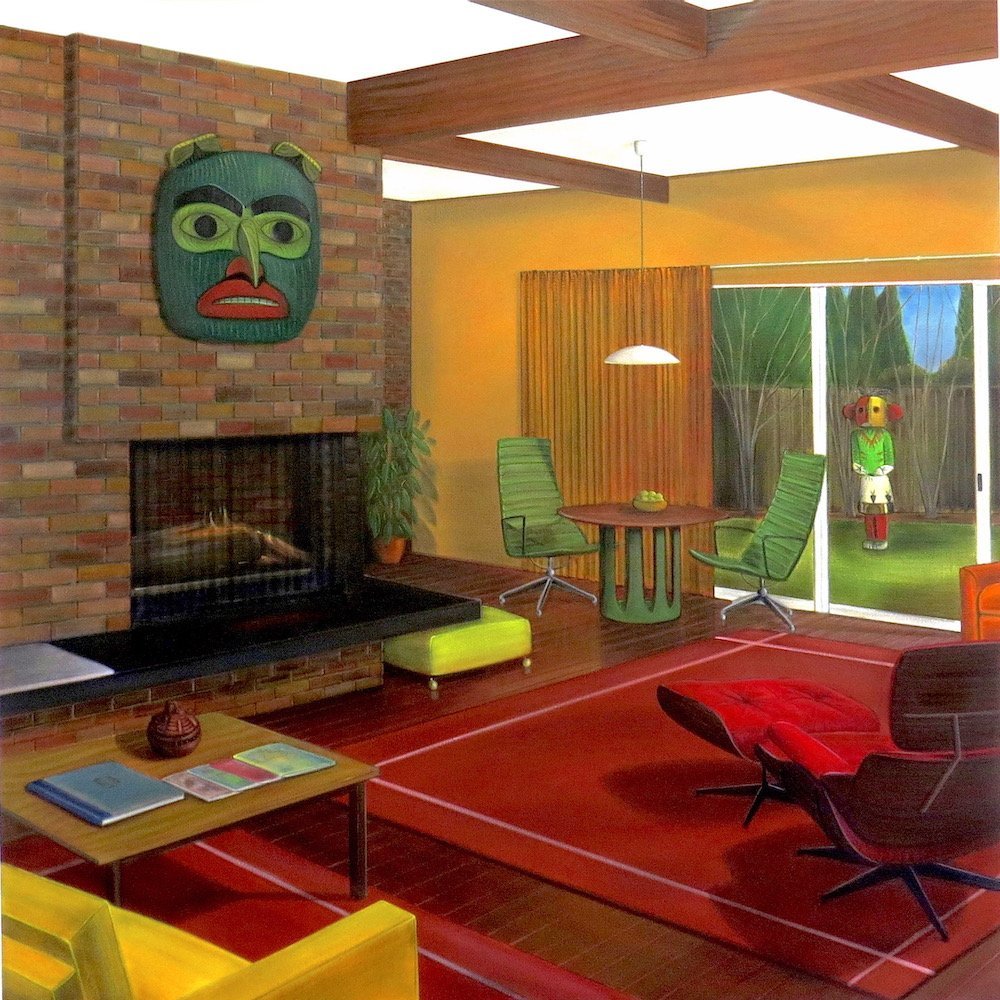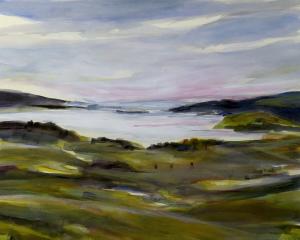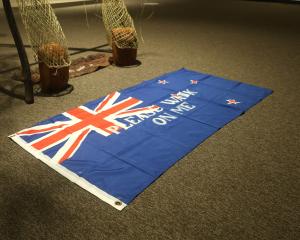In this week's Art Seen, James Dignan looks at an exhibition from the Milford Gallery, and two from Tūhura Otago Museum.
 Spirit Rooms II (Mask, Figure, and Jug), by Graham Fletcher.
"Spirit Rooms II", Graham Fletcher (Milford Gallery)
Spirit Rooms II (Mask, Figure, and Jug), by Graham Fletcher.
"Spirit Rooms II", Graham Fletcher (Milford Gallery)

Graham Fletcher’s "Spirit Rooms II" presents a series of living areas and modernist house exteriors, painted as if images for a 1970s "Good Furnishing" magazine.
Underneath that facile surface, things are not as they seem. The rooms appear haunted and unnerving, abandoned like aimlessly drifting urban Mary Celestes. They are decorated with tribal artefacts, wryly juxtaposed with passe decorations and ornaments, as if these are also tribal totems. The rooms are orderly and calm, yet there is a tension in the neatness. They look unlived-in, inhabited only by spirits.
The paintings ask questions about culture and civilisation — where are the lines between native culture and urban culture drawn, or is Western modernism just another tribal style? This sense is heightened in one room by a painting within a painting, one of Gauguin’s Tahitian works, displayed as if it too is a tribal artefact.
This subversion of our concepts of tribal and urban is drawn into sharp focus in the work Spirit Rooms II (Mask, figure, and jug) by the only living figure in any of the images. Standing outside the house is a watcher, a watcher wearing a tribal mask. We are left with thought-provoking questions about our place as "civilised" humans in a world where we are simply one more tribe to be studied.
 Homo Heidelbergensis, by Bruce Mahalski.
"Our Evolutionary Past: Branches Through Time", Bruce Mahalski (Tūhura Otago Museum)
Homo Heidelbergensis, by Bruce Mahalski.
"Our Evolutionary Past: Branches Through Time", Bruce Mahalski (Tūhura Otago Museum)

"Our Evolutionary Past: Branches Through Time" is primarily a science display, detailing the many branches and roots of the human family tree, from the dawn of hominid development in Africa several million years ago to our close relatives the Neanderthals and Denisovans, whose timespan overlapped those of modern homo sapiens.
What makes the display worthy of note in "Art Seen" is the impressive images of fossils created by Dunedin’s Bruce Mahalski. Mahalski is primarily known as the creator and curator of the city’s Museum of Natural Mystery, and as a prolific urban muralist, with his street art visible throughout New Zealand. He is a natural fit for this display, which combines his two interests of art and prehistoric artefact.
The display features two alternating groups of wall projections, one of photographic and textual information about our prehistory, and one of Mahalski’s large paintings. The text is informative and written such that both children and adults can appreciate and understand what is displayed.
Mahalski’s art can best be described as low-key portraiture: detailed depiction of skulls and skeletons presented in strong side-lighting against solid black backgrounds. The art is powerful and expressive, with the acrylic works almost having the linear feel of oilstick painting.

"It’s All in the Making: The Margery Blackman Textile Collection" (Tūhura Otago Museum)
Tūhura Otago Museum is also presenting an impressive display of traditional textile works, mostly from throughout southern Asia, from Turkey to Indonesia. A large percentage of the works are from Iran and its close neighbours. The works are from the personal collection of noted Dunedin weaver Margery Blackman, who gave her collection to the museum in 2021.
The items range from works over a century old to more recent pieces, but all were hand-made using traditional methods and fabrics. The majority have been created from lengths of fabric folded and seamed to create the items, with minimal use of cutting. Delicately woven tampan cloth and intricate embroidery and batik are also displayed, as is a small display of traditional fabric-making tools from Iran.
The textiles and clothes in the exhibition are an intriguing insight into traditional garments and designs from across the continent, as well as displaying the skills of the weavers and clothmakers. Because of the delicacy of some of the fabrics, lighting levels are kept low, but even so the strength of the colours is also clear. As always with such an exhibition, Tūhura Otago Museum has presented the items beautifully, with extensive interactive displays of information about the works.











